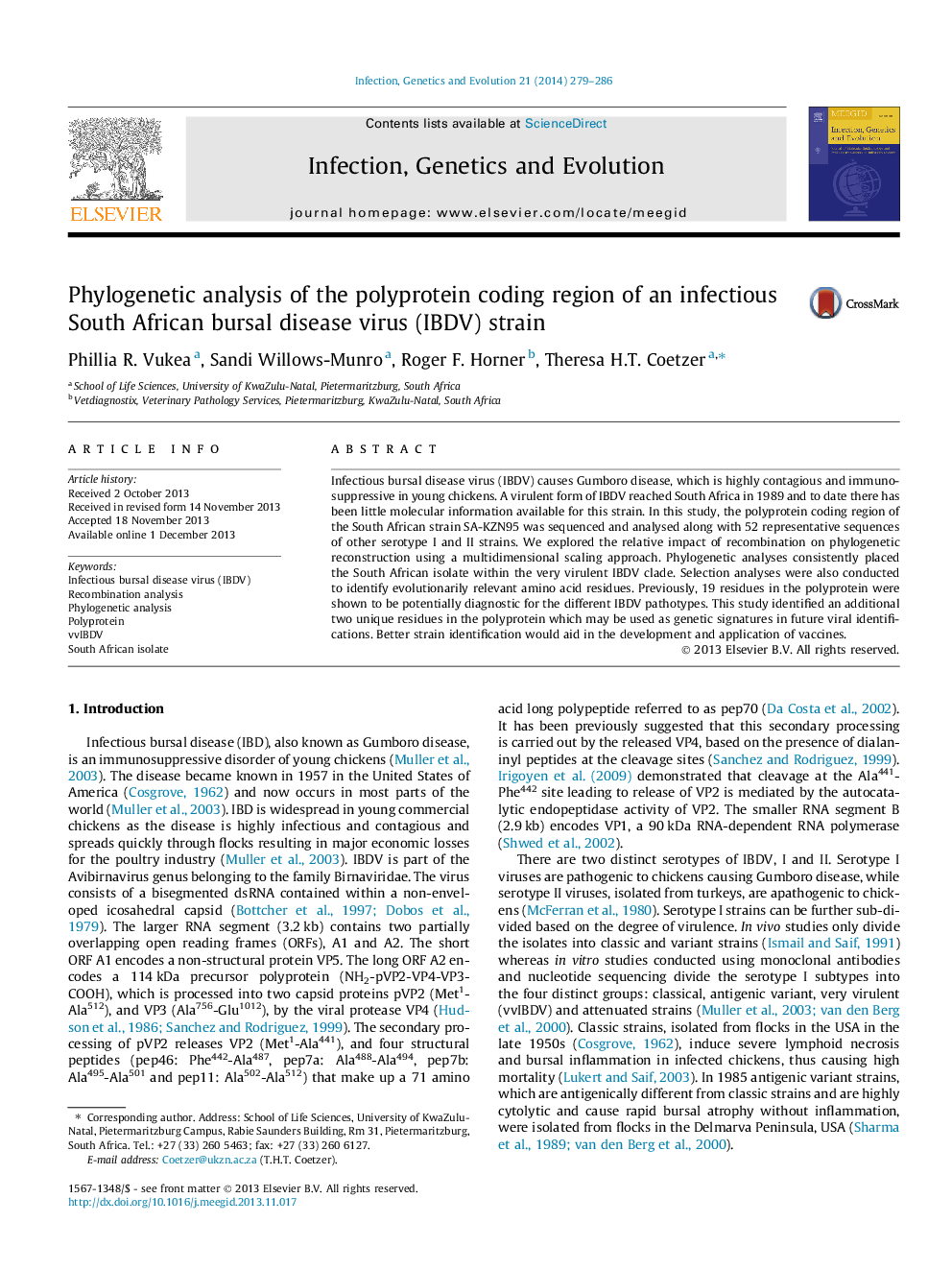| Article ID | Journal | Published Year | Pages | File Type |
|---|---|---|---|---|
| 5910221 | Infection, Genetics and Evolution | 2014 | 8 Pages |
â¢Phylogeny study of South African IBDV isolate polyprotein coding sequence performed.â¢The South African isolate was clustered within the clade of vvIBDV strains.â¢Selection analyses suggested clade specific deviations from neutrality.â¢The vvIBDV lineage had a higher proportion of negatively selected sites.â¢Two additional diagnostic residues were identified within the sequence.
Infectious bursal disease virus (IBDV) causes Gumboro disease, which is highly contagious and immunosuppressive in young chickens. A virulent form of IBDV reached South Africa in 1989 and to date there has been little molecular information available for this strain. In this study, the polyprotein coding region of the South African strain SA-KZN95 was sequenced and analysed along with 52 representative sequences of other serotype I and II strains. We explored the relative impact of recombination on phylogenetic reconstruction using a multidimensional scaling approach. Phylogenetic analyses consistently placed the South African isolate within the very virulent IBDV clade. Selection analyses were also conducted to identify evolutionarily relevant amino acid residues. Previously, 19 residues in the polyprotein were shown to be potentially diagnostic for the different IBDV pathotypes. This study identified an additional two unique residues in the polyprotein which may be used as genetic signatures in future viral identifications. Better strain identification would aid in the development and application of vaccines.
